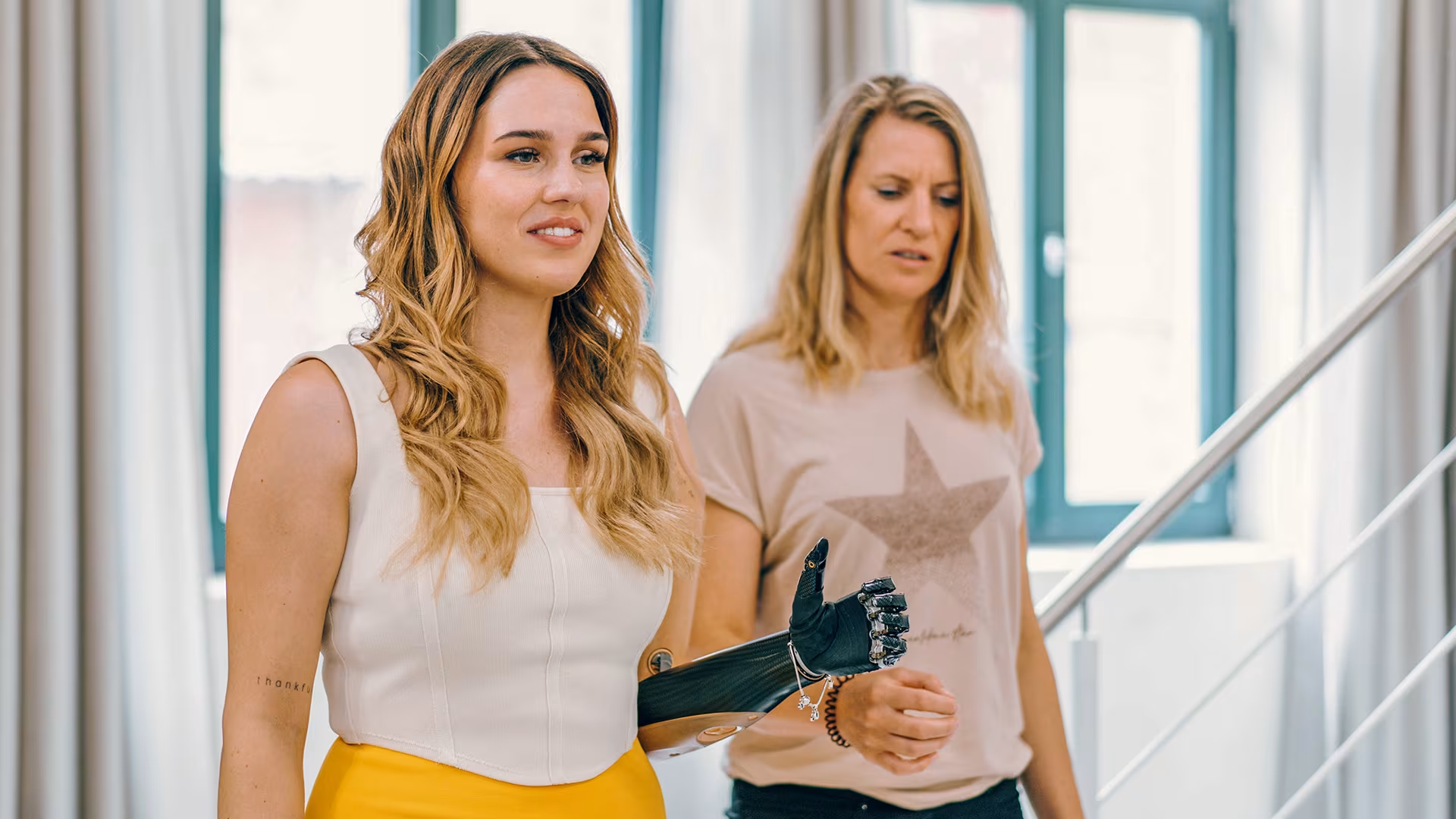


Amputation rehab: What to expect
The rehabilitation process is critical for anyone who has recently lost a hand or arm. Find out how the process can help heal your residual limb, restore your mobility, and prepare you for a prosthetic arm.
The rehabilitation process is critical for anyone who has recently lost a hand or arm. Find out how the process can help heal your residual limb, restore your mobility, and prepare you for a prosthetic arm.
Healing, training, and preparing for a prosthesis
After your amputation surgery, recovery and healing are your top priorities. The rehabilitation process is an essential part of this time. Together with your care team, you’ll focus on rebuilding your strength, carefully caring for your residual limb, and taking the first steps toward using a prosthetic arm.
Amputation rehab begins as soon as possible after your operation, and typically lasts about six months. During that time, your care team will create a detailed plan to heal your residual limb and get you ready for a prosthesis. You’ll also need to start preparing yourself for everyday life with your new upper limb difference.
We've outlined some of the key steps in that process. Keep in mind everyone’s experience will be different. Your care team will help you understand which activities are most important for you.
Recommended Steps to the Rehabilitation Process:
Heal your residual limb as quickly and successfully as possible
Strengthen parts of your body affected by your amputation
Prepare you to use a prosthetic device*
*These recommendations focus on devices for users who have had a transhumeral amputation. If you have had a different procedure, your prosthetist can provide you with more information on higher amputation levels.
Compression therapy
Supporting your healing wound
In most cases, amputation wounds close in three to four weeks before forming a scar. But while your scar may look like it has healed after a few weeks, the full healing process takes much longer – typically about 18 months.
During that time, caring for your skin and scar is a top priority. A few key steps can help you ensure your residual limb heals successfully, and that it’s ready for a prothesis when you’re ready to start using one.
In the hospital, the nursing staff and doctors took care of your residual limb by cleaning the wound and changing the bandages or dressings. In the rehabilitation phase, you now care for your residual limb, the scar and also your sound arm yourself. Being able to wear your prosthesis without problems requires ongoing, intensive care.
Desensitising the skin
The skin on the residual limb is often very sensitive after the amputation. You can take various steps to address this. Always use materials that are comfortable for you and work from the end of the residual limb towards the body.
Desensitizing your skin
After your amputation, the skin on your residual limb may be uncomfortably sensitive. There are a few ways you can reduce that discomfort:
Gently rub or tap your skin with a soft brush or a spiky massage ball. This will help slowly increase the amount of pressure your skin can take.
Gently rub down your residual limb with a bath towel or washcloth.
Whichever you try, always start at the end of your residual limb and work toward your body.

Cleaning your skin
Keeping your residual limb clean is also very important. Wash it every day with lukewarm water and an unscented, skin-friendly soap.
Ottobock offers several care products that can help you clean your skin or scar. Or, you can ask your prosthetist for recommendations.

Caring for your scar
Regularly moisturize your scar and the skin around it. Scars can’t produce the moisture that typically keeps your skin soft and flexible, which is essential when you start wearing a prosthesis. Prothesis and rough, dry skin can be a painful combination, one that makes it much harder for you to consistently wear your device.
Unscented moisturizing creams are often a good choice. Ask your prosthetist for their recommendation. They’re always the best place to start when you need advice on how to get the most out of your prothesis!
See what’s next for your journey with an upper limb difference

Preparing for your amputation surgery
An amputation is a major medical procedure that your care team will carefully plan and prepare you for. Find out what to expect from that important process.
An amputation is a major medical procedure that your care team will carefully plan and prepare you for. Find out what to expect from that important process.

Learning to use a prosthetic arm
A prosthetic arm can make a big difference in your day-to-day life, but learning to use one takes lots of practice. Find out how to pick the right device and get the most from it.
A prosthetic arm can make a big difference in your day-to-day life, but learning to use one takes lots of practice. Find out how to pick the right device and get the most from it.

Exploring bionic life stories
Discover a truly remarkable group of people who've come together to share their experiences, their inspiration, and their tips and tricks for living an empowered life with a bionic hand. Explore their inspiring stories - and share yours!
Discover a truly remarkable group of people who've come together to share their experiences, their inspiration, and their tips and tricks for living an empowered life with a bionic hand. Explore their inspiring stories - and share yours!











